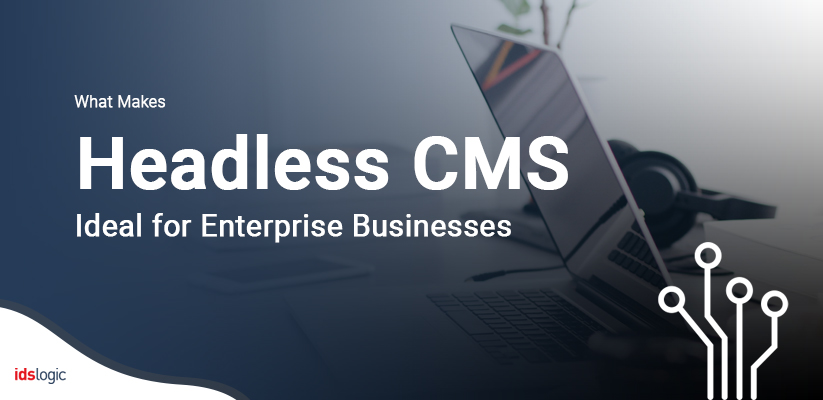
What Makes the Headless CMS Ideal for Enterprise Businesses
In the coming few years, our homes and offices will have many IoT devices and AI enabled devices will also constantly play a great role. So, business brands that are looking to attract the consumer attention has to plan to use a CMS to create a strong presence. Traditional CMS tools have failed to address the needs of the users in various ways like providing the required flexibility for delivering the content to an existing channel or even integrating any new delivery formats.
Business brands often want to get their content in front of their audience at the right time and through the right device. To solve this issue, many organizations are turning to the system that provides a headless CMS style of implementation.
A headless CMS does not have any default front end system to determine how the content will be presented to the end user. It is front end agnostic, which means that your content can be published anywhere by using any framework. It is by getting rid of the front end delivery layer that your CMS development is a content only data source. From the technical point of view
Why should You Choose a Headless CMS Development?
With a headless CMS, you now have the modeling and editorial tools needed to create and edit the content. The concept of publishing content means making it available via an API. This means that you and your front end developers can easily handle whichever framework and tools that you prefer.
Flexibility: In a traditional CMS many features are very limiting and this can be frustrating for the users. A headless CMS will allow you to design your front end and since it comes with a well-content defined API, you can allocate more time and create instead of managing it.
Little Technical Knowledge Needed: By using the headless CMS, there is very little need for technical knowledge and it is also a lot quicker for marketing and publishing teams to create new functionalities. If the marketing team wishes to create a new product mini site, then they can go straight into the CMS and create the content immediately without waiting for the developers to build the CMS based templates.
Also Read: Headless Technology: The Strategy That Ecommerce Retailers Use to Win Big
Security: Headless CMS provides a better software architecture, which separates the platform from the content. Access to the CMS is restructured internally within the company, while the content is published outside is approved for public consumption or even encrypted as required.
Scalability: Since the backend and the front end are separated, it does not need any separate time for maintenance. This allows you to customize the website without having to compromise on the performance.
Headless CMS Platforms that You Need to Consider
Zesty.io:
This is a SaaS decoupled CMS platform, which is built to be marketer friendly and expose all content via an API. Other features of this platform include the drag and drop content modelling, automatic hosting, multisite support and scalability and more.
Contentful:
This is also a headless API driven platform that helps to manage, integrate and also deliver content to any device or service. It helps to create your own content models and define the own schemas to be displayed in a wide range of applications. This CMS platform can be advantageous to the developer team as they can distribute or even reuse the content across various channels.
Sitefinity CMS: This was developed with headless practices and is recognized for its capabilities and flexibility to integrate with various technologies. It has a cloud first approach with a clean API and a new architecture that supports both the traditional CMS and the headless CMS.
DNN Evoq content: This is an open source decoupled headless CMS that provides a comprehensive set of features that are suitable for both IT and the marketing team. The marketers have access to inline image editing, WISIWYG editing, a content layout model that enables content to flow to any channel in a headless manner.
Also Read: Why to Consider a Headless CMS for Developing Your Modern Application